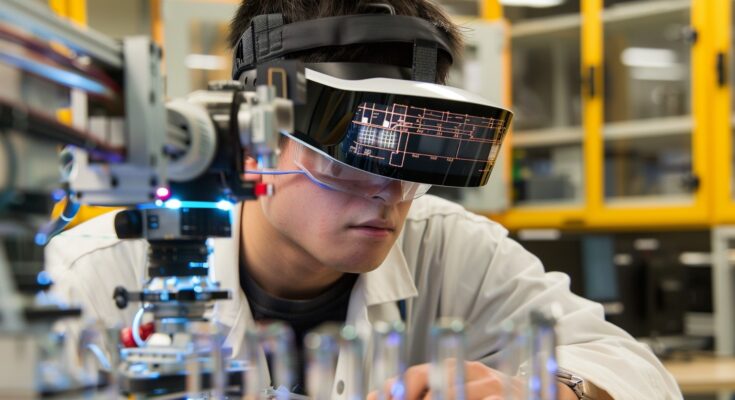How Physics Forms Technology: Deep High in the Junction of Science and Innovation
Physics is that fundamental science dealing with matter, energy, and the relation posited between them. It has deepened the impact on the way technologies are developed. From the simplest of tools to the most sophisticated of digital systems, their making relies on principles of physics. This paper will explore how it is done: how physics shapes technology to reveal the dynamic interplay of theoretical precepts and practical creativity.
- The Contribution of Physics to Advancement in Technology
Physics is the science branch that results from the change due to technology. It provides the principles and equations narrating how and why things work, which engineers and technologists apply in coming up with new devices and systems. The relationship goes both ways: physics gives a theoretical base, while technology often gives way to new discoveries in physics.
- Basic Principles
The basic foundations of the subjects are in mechanics, electromagnetism, thermodynamics, and quantum mechanics. It is from these said principles that scientists and engineers are able to manipulate physical systems and discover technologies to tap or govern other physical systems’ behavior.
- Experimental Methods
Another enormous contribution physics has made to technology is classical mechanics through the development of experimental techniques and measurement tools. Classical mechanics has been the initiator of technological progress; for instance, the innovations in measurement technologies that form part of the keys to unlocking new regimes of physics.
- Classical mechanics is the basic foundation for most of engineering and its applications
—treating the subjects of movement of things and the forces put upon them.
- Structural Engineering
The principles governing classical mechanics are useful in structural engineering. A few of the ideas that are applicable in designing and analyzing the design of buildings, bridges and such other structures comprise force, stress and strain concepts. For example, without using the principle of mechanics, it would be very difficult to specifically compute the load carrying capacity or simply to design safety systems.
- Transportation Engineering
From cars through to airplanes, the backbone for these transport technologies is classical mechanics. The engineers derive, among others, Newton’s laws of motion to develop effective, reliable, and safe car engines. For example, deeper questions on forces and momentum may help in designing vehicle performances that are optimum and have crash safeties built into them.
It also finds application in the field of machines and mechanical machinery systems. For a specified application in manufacturing or robotics, engineers design some useful machinery by applying concepts like torque, rotational motion, and mechanical advantage.
- Electromagnetism and Modern Technology
Electromagnetism is a field that studies electric and magnetic fields and their interactions. It lays much of the ground for what today is known as modern technology, from electrical engineering and telecommunications down to sections of automobiles dry b. Electric Power Generation and Distribution
The laws of electromagnetism are, in essence, basic to both the generation and distribution of electrical power and the enhancements in technologies, including electromagnetic machines such as generators, motors, and transformers. An example is Faraday’s law of induction, which says that a varying magnetic field can induce an electric current in a conductor; the statement is, in fact, one of the working principles of an electric generator.
Broadly speaking, the propagation of electromagnetic waves is behind the variety of telecommunications technologies that include broadcasting or radiations associated with radio, television and the exchange of information over the Internet. Further, the solution for the propagation of electromagnetic waves is derived by solving Maxwell’s equations. Singapore: Designing the antennas and the transmission systems that facilitate the communication of information without the use of wires was made possible by the development of Maxwell’s equation.
Electromagnetism and quantum mechanics in semiconductor and electronic device development play a part right at the edge of quantum principles and are utilized in the preparation of integrated circuits, transistors, and other electronic devices.
- Thermodynamics and Energy Technologies
Thermodynamics: the study of heat and energy transfer. Many of the technologies associated with the production and use of energy are bound to thermodynamics.
- Heat Engines
Original: Heat engines apply the principles of thermodynamics, such as internal combustion engines and steam turbines. The efficiency is ideally measured by the different forms of engines that transform heat into mechanical work, which is governed by the Carnot cycle, and the second law of thermodynamics.
- Refrigeration and Air Conditioning
These same principles of thermodynamics also underlie refrigeration and air-conditioning technologies. In these technologies, system operation is based on a refrigeration cycle for the transfer of heat from one location to another; hence, these meet the cooling or heating demands of spaces.
- Renewable Energy
One of them: the thermodynamics underlying solar panels and wind turbines.
- Quantum Mechanics and All These Technologies
Ever since quantum mechanics was discovered in respect of particle activity at the atomic or subatomic level, one after another these technologies fell into place, along with their derivative effects.
- Quantum Computing
Computers have to Think Like Humans: Groundbreaking New Frontiers of Information Technology
Quantum computing has been depicted as the most disruptive computing technology in the history of man. Quantum computing technology makes use of quantum superposition and entanglement in performing operations that any classical computing system is not able to perform. Such technologies are eventually going to solve exceedingly complex problems relevant to cryptography, material sciences, and artificial intelligence.
- Quantum mechanics
Quantum mechanics is thus primarily responsible for knowing electron behaviors in semiconductors that led to the invention of transistors and integrated circuits. Additionally, quantum principles became crucial in nanotechnologies due to the possibility of handling the materials at an atomic level, giving materials better functionalities, and then the construction of new devices and components with novel properties.
- Quantum Communication
Other quantum communication technologies include quantum key distribution, wherein data can be securely move around using the principles of quantum mechanics. When put together with quantum entanglement, they are expected to make any form of eavesdropping on the communication, interception of data, or breaking of the connection all but impossible.
- The Interplay of Physics and Technology
The relationship between physics and technology is dynamic and reciprocal in nature. On the one hand, where physics lays down the theoretical foundation for technological innovation, on the other hand, some advancement in technology can give rise to new discoveries and insights into physics.
Very often, technological progress opens up fundamentally new possibilities for carrying out research in physics. In this way, for instance, accelerators have been designed to delve into the constituents of matter. Advances in acceleration-led research subsequently produced sensational new results, in particular, the Higgs boson.
- Technological Physics
On the contrary, technological puzzles can stimulate new areas of physics research. For example, the need for ever faster and more efficient computers drove research in quantum mechanics and condensed matter physics—areas of physics that later produced the work on quantum computers and nanotechnology.
- The Future Hosted
This in turn means that the interdependence of physics and technology per se will have a significant role both in further progress in the field and in the nature of further discoveries, given the ever-continuing march of technology forward.
The progress in the field of material science shall be incessant because Physics defines the universal principles. There will yet be discoveries on superconductors, metamaterials, and advanced composites for upgrading in the areas of electronics, energy storage systems, and manufacturing.
Future technologies will likely push our understanding of fundamental physics to the very edge. The unified theory to embrace general relativity with quantum mechanics is reported to pave the way to the breakthrough of knowing the universe at last scientifically substantiated by creating new technologies based on these principles.
Emerging Technologies for Integration
Both the evolution of physics and its further progress would benefit from the growth of sustainable technologies related to artificial intelligence, machine learning, and biotechnology. An example includes the presence of quantum computing and data analysis that would support the development of new algorithms and new computational methodologies.
Global issues related to climate changes and shortages will be controlled through the development of sustainable technologies. In general, physics will undoubtedly play a pivotal role in the future while developing new solutions for energy production, resource management, and environmental protection.
- Examples of Physics Shaping Technology
There are many examples of how history and currently physics has shaped technology and vice versa:
- Developments of the Internet
The internet, the backbone for modern communication, is based on electromagnetism and quantum mechanics. Development of high-speed data transfer and global connectivity became facilitated by application of the principles of electromagnetism and quantum mechanics in the development of semiconductors and fiber optics.
- Advances in Medical Imaging
Presently, we observe a practical application of such concepts as those in nuclear physics and electromagnetism towards the development of medical imaging technologies like MRI or PET scans, which indeed have revolutionized diagnostics and treatment in the medical field by providing vivid images of the human body, thus facilitating the detection of various diseases at an early phase.
- Space Exploration
Some of the technologies that have derived principles from the classical mechanics, principles of thermodynamics, and principles of electromagnetism are rockets, spacecraft, among others. Exploration in space has made possible the understanding of the general view of the universe, as well as the application of the technologies that help attain global communication by use of telecommunications and satellite technologies, among others.
Conclusion
Physics is not enough to develop and sustain technology. Physics provides the bedrock from classical to quantum mechanics, detailing the understanding and exercising control of physical systems that bring about new technologies now configured in our world. This dynamic interplay between the new physics and technology has, during its history, moved forward to stay in the realization of new insights, fresh with promises for the future. Technology is the basis of innovation and the foundation of discovery. This relationship does more than simply recognize the importance of physics in the development of technology. It appreciates the fact that whatever technology holds a potential for a breakthrough that remains a part of life will change our lives and the environment.



